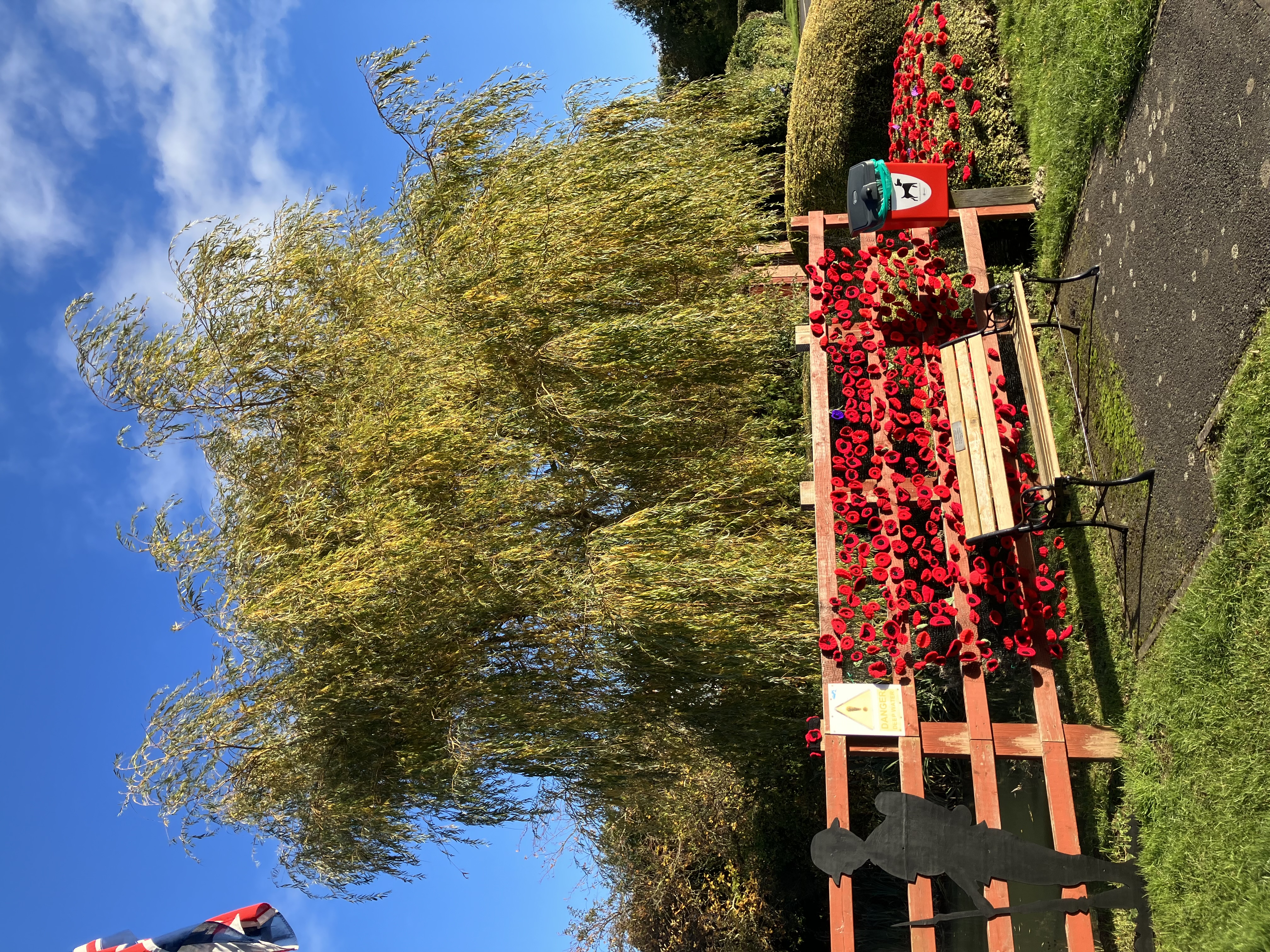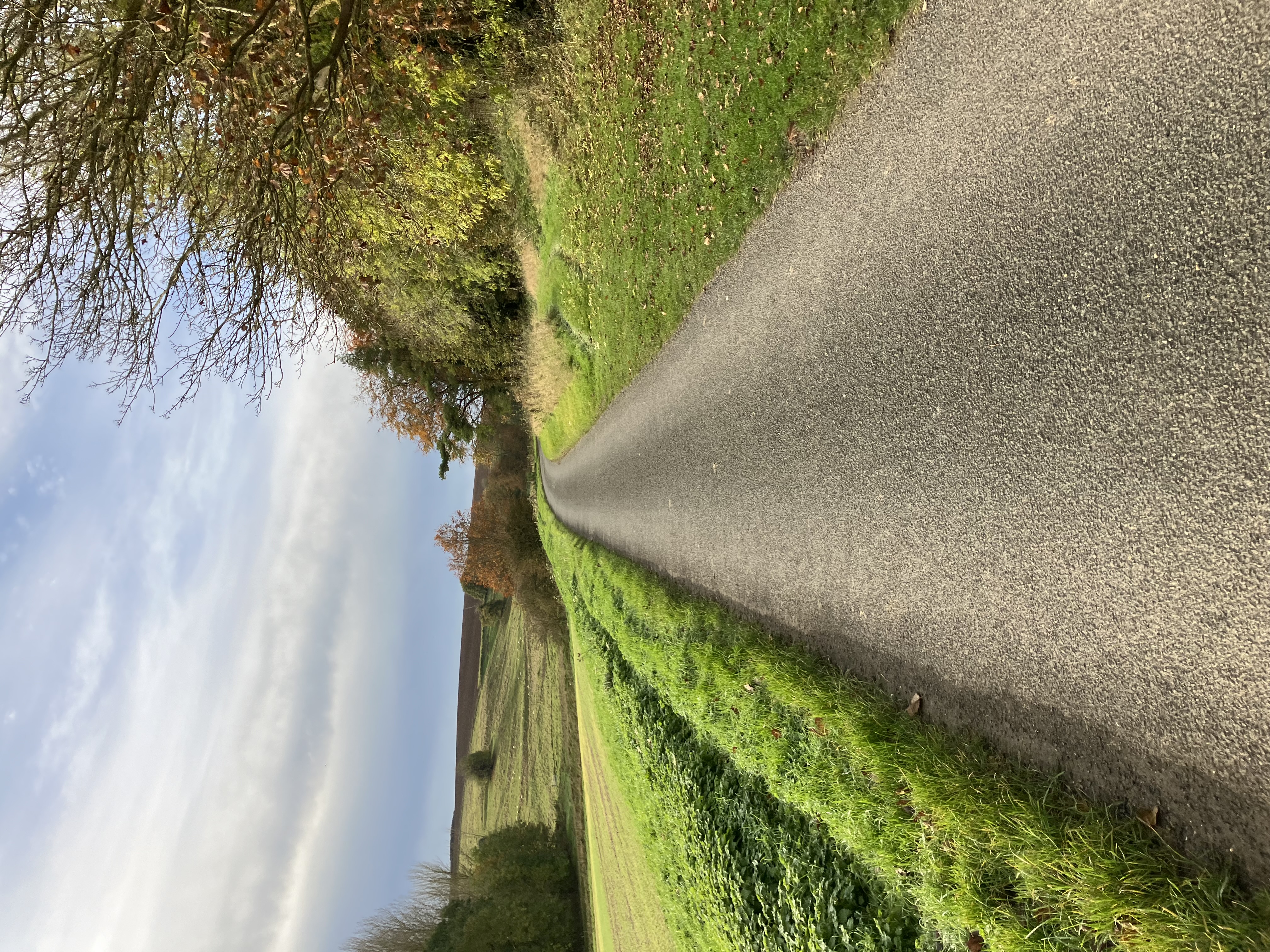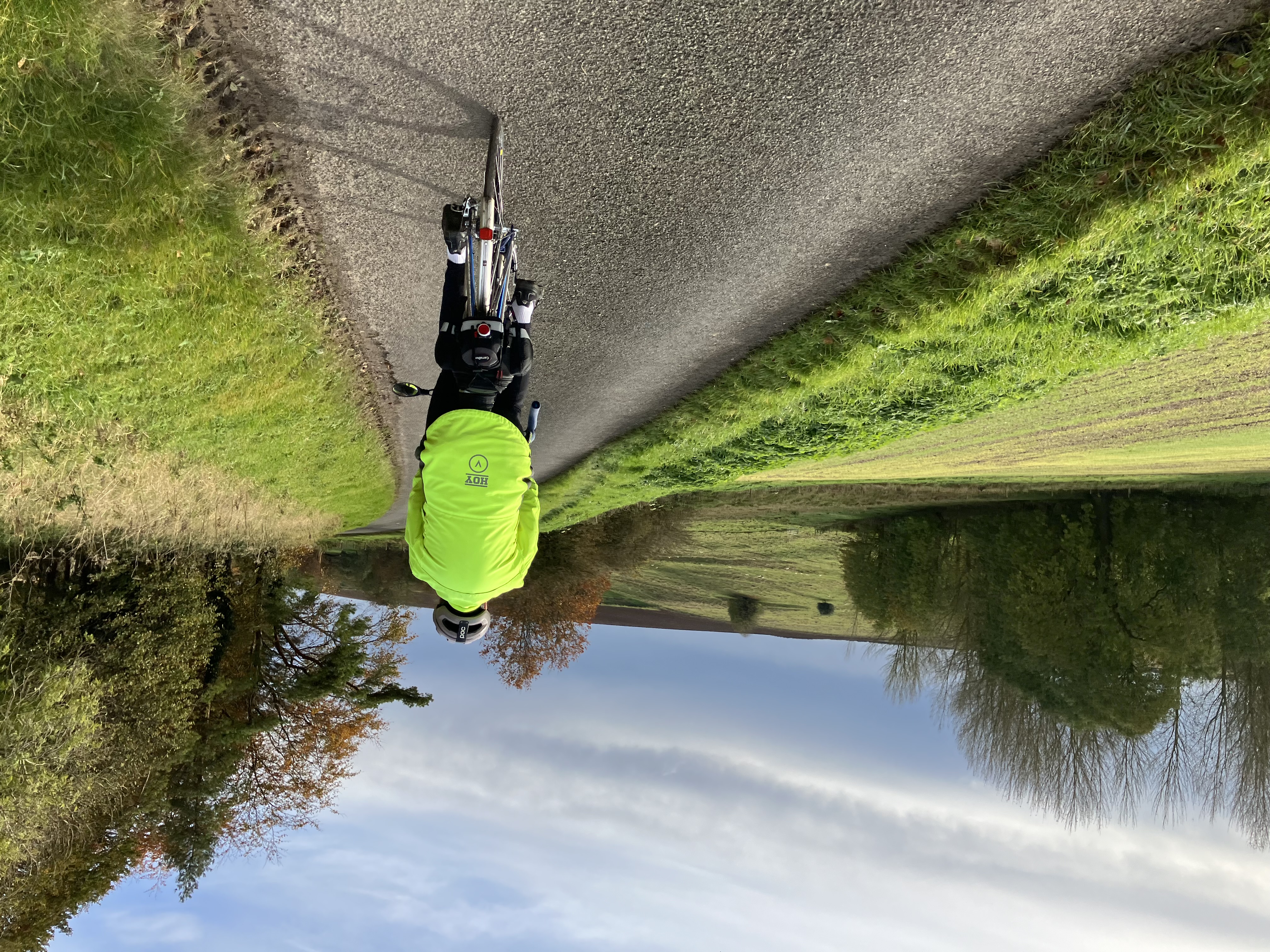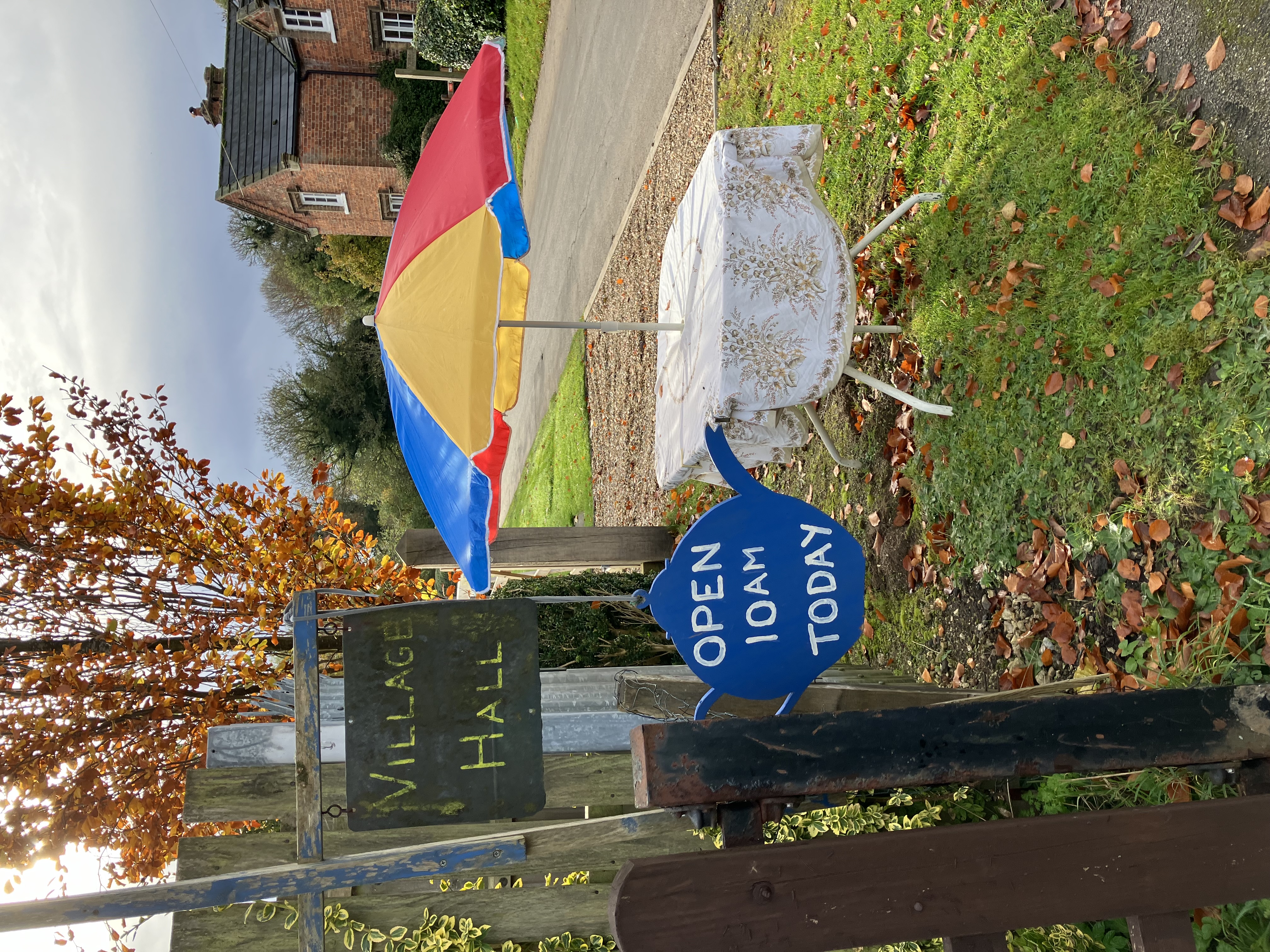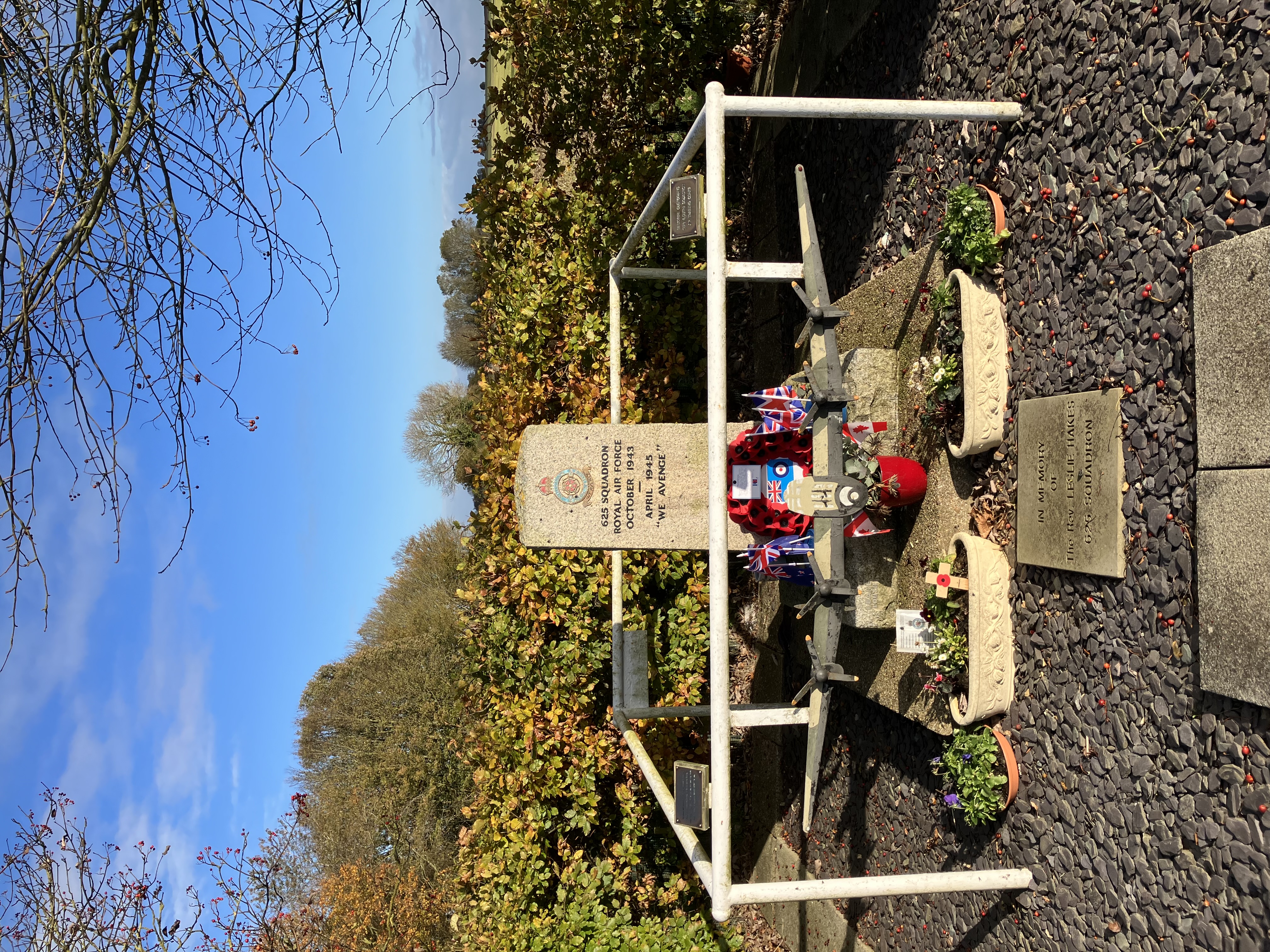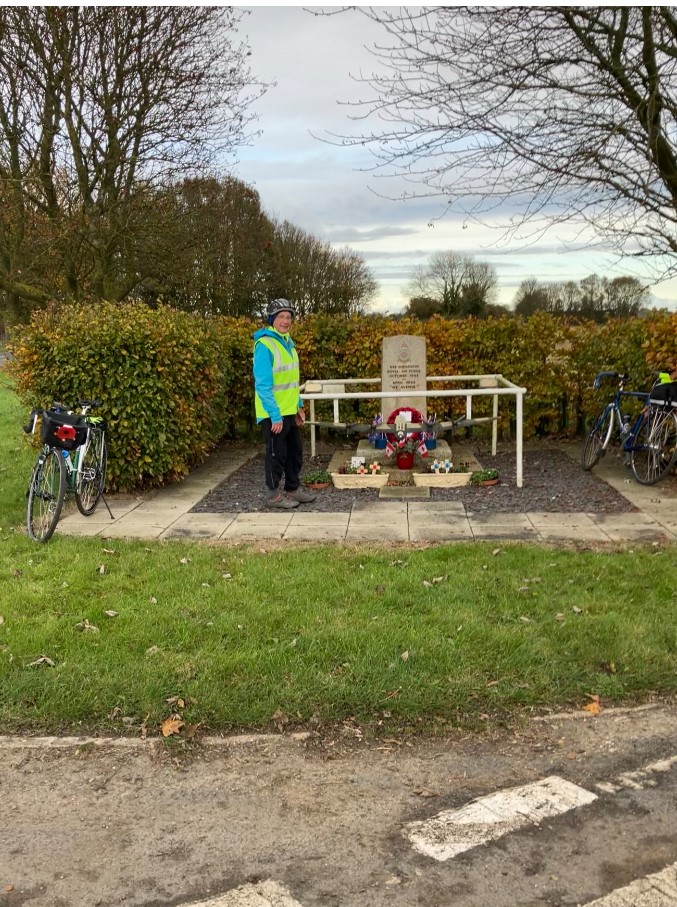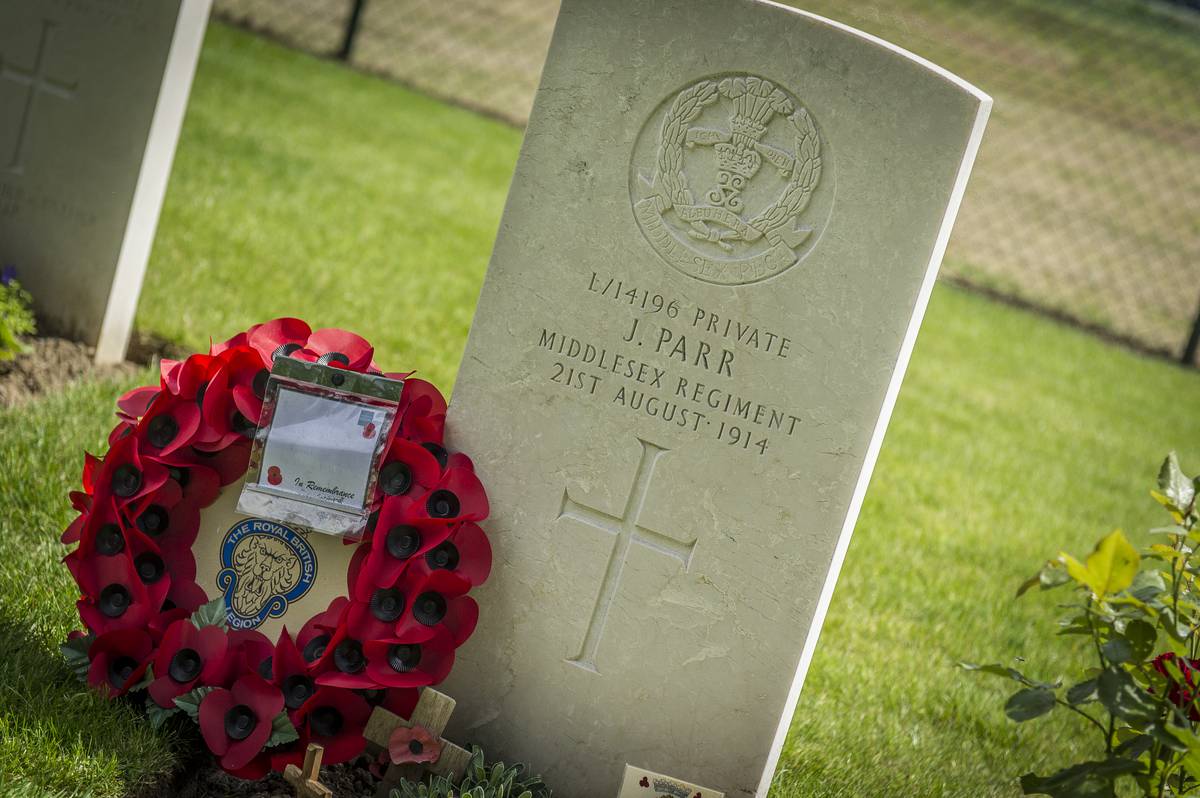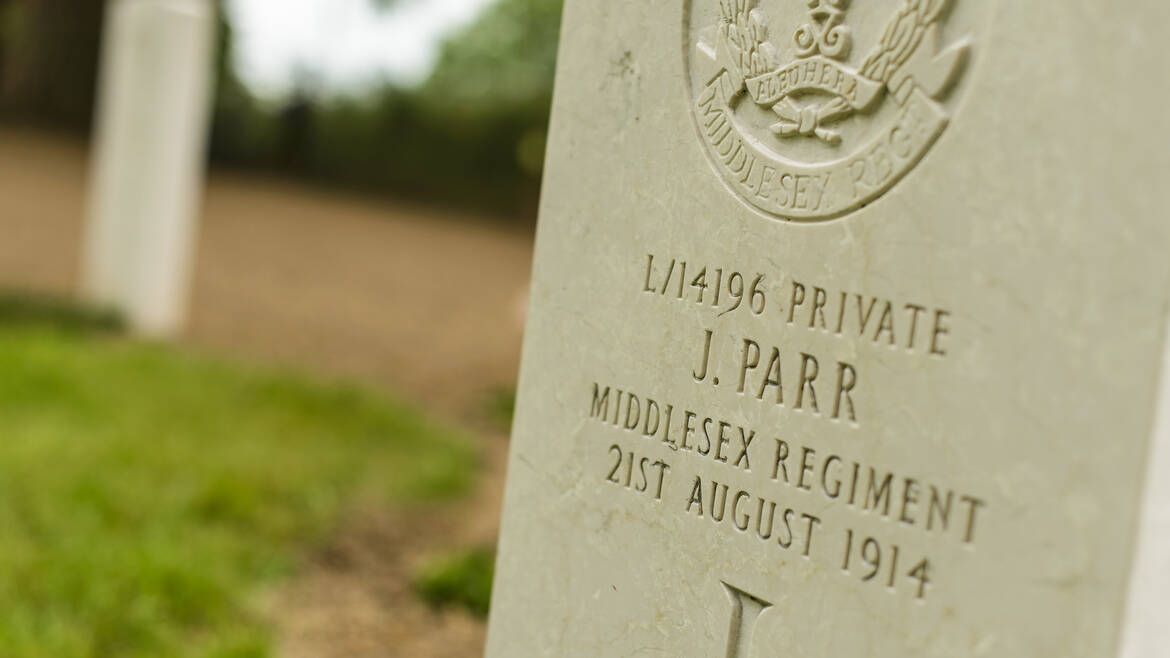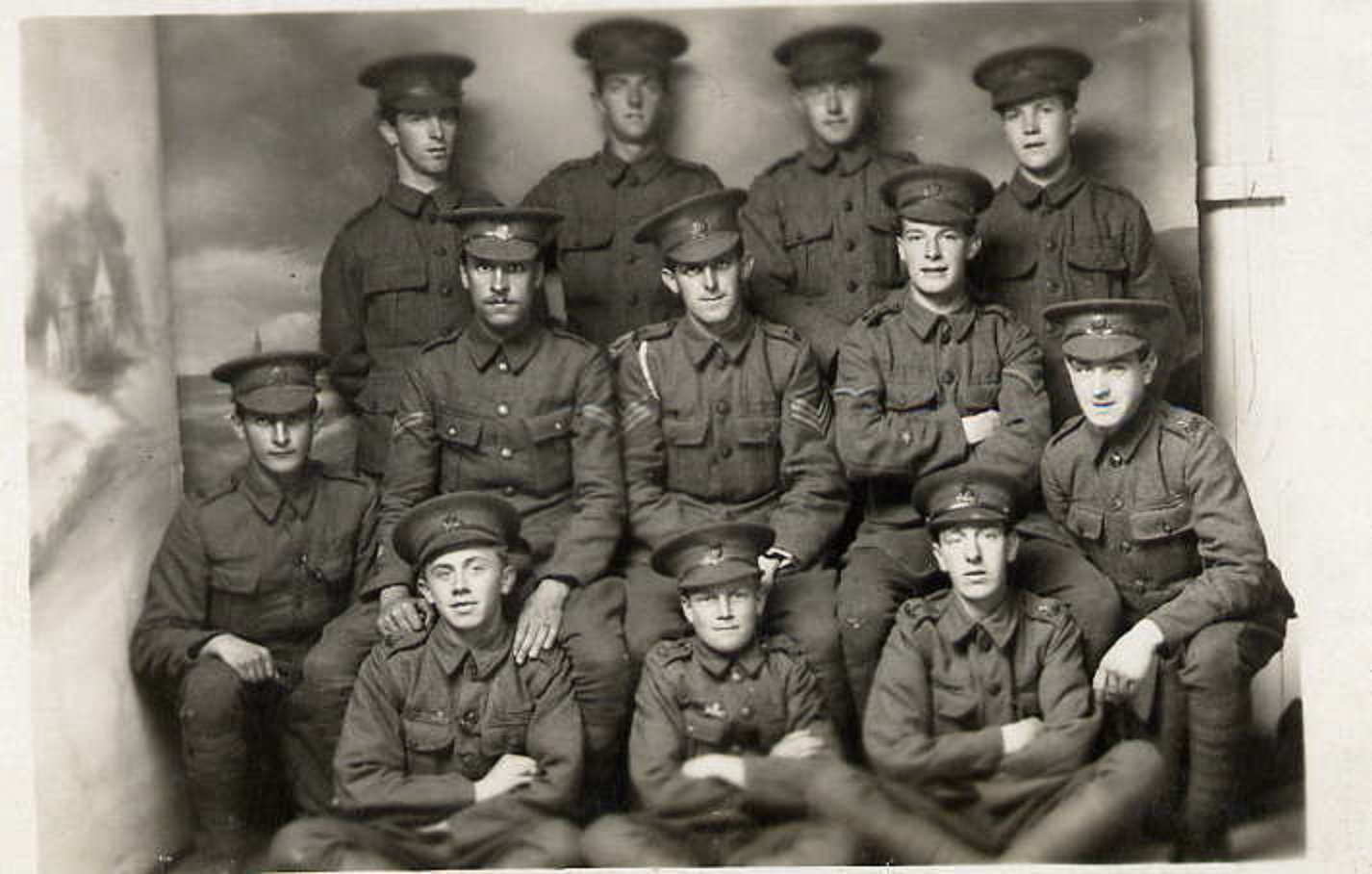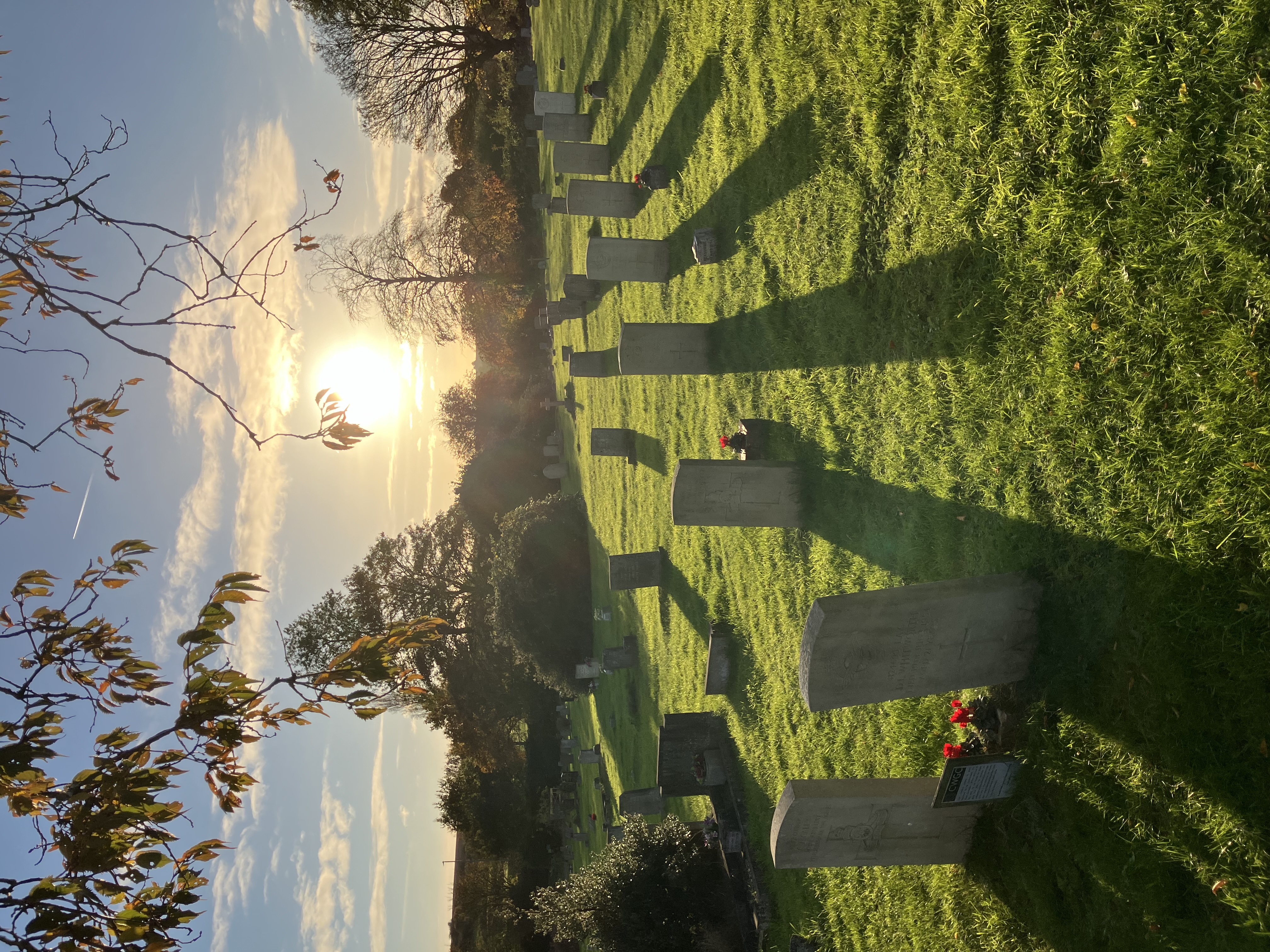Remembrance Day Ride 12-11-2023

Remembrance Day Ride 12-11-2023:
Gathering at Louth’s Meridian Leisure Centre on this Remembrance Day were today’s Ride Leader Tim Newbery, Paul Linder and a guest appearance by Grahan Crowder. Graham used to cycle with the club in its early days but moved to Fife, Scotland some 26 years ago. Great to have had Graham join us today and very best wishes to his wife Jessie, who wasn’t able to ride with us on this occasion.
The day had dawned frosty and foggy and Tim hoped that the forecast of some sunshine by 10 am would in the end materialise. Although the thermometer registered just 3.1 Degrees Celsius at the time of departure, skies were bright and the frost had melted. We were hoping to return in time before the rain, which was due to set in by 2 to 3 pm.
Our route to Fotherby took us through Brackenborough and Little Grimsby, arriving at the memorial about 10.45 am. Within a few minutes John and Jen Rickett had joined us on foot, John not being able to ride for a further few weeks. Many of the villagers were in attendance and with the chimes of Big Ben signalling 11 am, all was quiet in observance of the two-minute silence. Group Captain Brian Clark (RAF Rtd) poignantly recited Laurence Binyon’s The Ode Of Remembrance, ‘They Shall Not Grow Old As We That Are Left Grow Old’.
Brian was good enough to come across for a chat, as with a fellow member of the village and we were made very welcome. John and Jen went on to invite us all for tea and coffee but Graham needed to return to Louth and Tim and Paul also turned down the very generous offer, as otherwise we’d never want to continue our scheduled ride.
The two of us made progress through Utterby to North Ormsby (Nun Ormsby). The ruins of the Gilbertine priory of St. Mary founded in 1148 are now hard to see. Climbing steadily up to Boswell Road, Paul had mentioned he was unable to engage his lowest gear and may have to dismount. In the end a burst of speed propelled him up to the top road without a pause and well ahead of Tim. It must have been the aerodynamically waxed chain that had made the difference!
This tree lined valley route is always a pleasure affording views of all the autumnal shades of russet orange, yellow and gold as leaves are shed and now lie in mounds waiting to be rustled by passers-by.
With a back wind and undemanding undulating lanes, we were soon arriving into Wold Newton. We had been surprised on the ride so far to have seen so few cyclists and there was hardly a bike to be seen at the Village Hall. Plenty of cake therefore to choose from and Tim thoroughly enjoyed a large slice of ‘sticky pear and ginger sponge’.
Having enjoyed a particularly sunny morning, skies were now clouding over for our next leg of the ride which would take us to Click’em Wood and then along to Beech Plantation and the former RAF Kelstern, today’s highest point at about 135 m. Here the memorial pays tribute to 625 Sqn (Lancaster) and to all those who served from this rather desolate Wolds airfield and never returned.
A return to Louth was uneventful, arriving back by 2.15 pm having covered about 33 miles. Temperatures had climbed to a dizzy 8.1 Degrees Celsius. Rain duly arrived by 3 pm so great timing!
This year marks the commemoration for the 105th anniversary of Armistice Day.
Although the military use of bicycles began in the mid 1880’s as a sort of ‘Home Guard’ and later still during the Boer War, it wasn’t until the ‘Great War’ that saw bicycles deployed on a grand scale. Around 300,000 is an estimate with at least 100,000 British soldiers using bicycles in some capacity.
The Cyclists’ Touring Club and the Army Cyclist Corps:
In August 1914, CTC approached the War Office in order to offer the services of a large number of cyclists to the war effort shortly after hostilities started. While appreciated, the offer was initially declined. Despite this, CTC put out an appeal for members to come forward who were willing to offer their services to the Army Council should it be required in the future. In September 1914 the ‘CTC Gazette’ contained a form for members to fill in so that they could be put on a waiting list for a possible outlet for “active patriotism”. It’s not known exactly how many Cyclists’ Touring Club members joined up during the Great War, but the February 1915 edition of the CTC Gazette alone listed 170 early volunteers.
As the cyclists on the fighting line were armed (the primary role of the Army Cyclists’ Corps was in signals), they became prime targets for snipers, resulting in high casualty numbers. They were nicknamed ‘The Suicide Battalions’. Three CTC Rolls of Honour were published in the club’s monthly Gazette during 1916, listing the names of 103 members who had been killed in action. Many more would go on to loose their lives.
In addition to the roles of reconnaissance and communications on the fighting line, for some it was a case of Home Defence. A coastal watch was imperative in the early months and units were deployed to watch for invasion forces, and attack by Zeppelin Airships. The 5th Battalion East Yorkshire Regiment (Cyclists) is one such example. In August 1914, the 5th went to its war station which was to cover the coast between Tetney and Skegness with its Headquarters based in Louth. Those protecting Mablethorpe, Section 3, were known as “Our Valiant Section”.
First Casualty of the First World War - A cyclist:
Sited opposite each other in the St Symphorien military cemetery, just south-east of Mons in Belgium, are the gravestones of the first and last British soldiers to be killed in the First World War. Private John Parr was killed 17 days after Britain declared war; Private George Ellison died 90 minutes before the armistice. When they were buried, their "first" and "last" status was unknown - making it all the more poignant.
John Parr joined the army at the age of 14, five years younger than the legal age to fight at the time, he was 5ft 3ins. Parr became a reconnaissance cyclist with the Middlesex Regiment. Coming from a deprived background he had probably sought decent clothes, a square meal and the chance for adventure.
On 21 August 1914, Parr and another cyclist were sent to the village of Obourg, just northeast of Mons with a mission to locate the enemy. It is believed that they encountered a cavalry patrol from the German First Army, and that Parr remained to hold off the enemy whilst his companion returned to report. He was killed in the ensuing rifle fire.
The age originally given on Parr's gravestone was 20. He was actually 17.
For The Fallen:
The iconic poem ‘For The Fallen’ by Robert Laurence Binyon (1869-1943) was published in The Times newspaper on 21st September 1914, just seven weeks after the beginning of the war. In its gravitas, its tenderness, and depth of grief it was alone in war reports or other poems appearing at the time.
The four lines of the fourth stanza are perhaps best known and have been claimed as a tribute to all of those who have lost their lives in conflict:
They shall grow not old, as we that are left grow old:
Age shall not weary them, nor the years condemn.
At the going down of the sun and in the morning
We will remember them.
